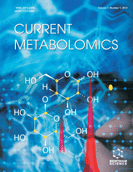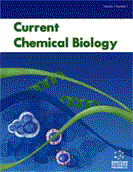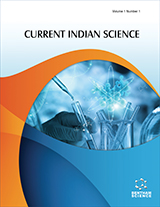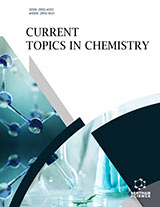Abstract
Glioblastoma multiforme (GBM) is the most common and malignant form of primary brain tumors. It is highly invasive and current treatment options have not improved the survival rate over the past twenty years. Novel approaches and technologies from systems biology have the potential to identify biomarkers that could serve as new therapeutic targets for GBM. This study employed lipid profiling technology to investigate lipid biomarkers in ectopic and orthotopic human GBM xenograft models. Primary patient cell lines, GBM10 and GBM43, were injected into the flank and the right cerebral hemisphere of NOD/SCID mice. Tumors were harvested from the brain and flank and proteins, metabolites, and lipids extracted from each sample. Reverse phase based high performance liquid chromatography coupled with Fourier transform ion cyclotron resonance mass spectrometry (LC-FTMS) was used to analyze the lipid profiles of tumor samples. Statistical and clustering analyses were performed to detect differences. Over 500 lipids were identified in each tumor model and lipids with the greatest fold effect in the comparison of ectopic versus orthotopic tumor models fell predominantly into four main classes of lipids: glycosphingolipids, glycerophoshpoethanolamines, triradylglycerols, and glycerophosphoserines. Lipidomic analysis revealed differences in glycosphingolipid and triglyceride profiles when the same tumor was propagated in the flank versus the brain. These results underscore the importance of the surrounding physiological environment on tumor development and are consistent with the hypothesis that specific classes of lipids are critical for GBM tumor growth in different anatomical sites.
Keywords: Biomarkers, cancer, glioblastoma multiforme, lipid profiling, mass spectrometry.
Graphical Abstract
Current Metabolomics
Title:Lipidomic Analysis of Glioblastoma Multiforme Using Mass Spectrometry
Volume: 2 Issue: 2
Author(s): Soo Jung Ha, Gordon Showalter, Shanbao Cai, Haiyan Wang, Wei Michael Liu, Aaron A. Cohen-Gadol, Jann N. Sarkaria, Jenna Rickus, John Springer, Jiri Adamec, Karen E. Pollok and Kari L. Clase
Affiliation:
Keywords: Biomarkers, cancer, glioblastoma multiforme, lipid profiling, mass spectrometry.
Abstract: Glioblastoma multiforme (GBM) is the most common and malignant form of primary brain tumors. It is highly invasive and current treatment options have not improved the survival rate over the past twenty years. Novel approaches and technologies from systems biology have the potential to identify biomarkers that could serve as new therapeutic targets for GBM. This study employed lipid profiling technology to investigate lipid biomarkers in ectopic and orthotopic human GBM xenograft models. Primary patient cell lines, GBM10 and GBM43, were injected into the flank and the right cerebral hemisphere of NOD/SCID mice. Tumors were harvested from the brain and flank and proteins, metabolites, and lipids extracted from each sample. Reverse phase based high performance liquid chromatography coupled with Fourier transform ion cyclotron resonance mass spectrometry (LC-FTMS) was used to analyze the lipid profiles of tumor samples. Statistical and clustering analyses were performed to detect differences. Over 500 lipids were identified in each tumor model and lipids with the greatest fold effect in the comparison of ectopic versus orthotopic tumor models fell predominantly into four main classes of lipids: glycosphingolipids, glycerophoshpoethanolamines, triradylglycerols, and glycerophosphoserines. Lipidomic analysis revealed differences in glycosphingolipid and triglyceride profiles when the same tumor was propagated in the flank versus the brain. These results underscore the importance of the surrounding physiological environment on tumor development and are consistent with the hypothesis that specific classes of lipids are critical for GBM tumor growth in different anatomical sites.
Export Options
About this article
Cite this article as:
Ha Jung Soo, Showalter Gordon, Cai Shanbao, Wang Haiyan, Liu Michael Wei, Cohen-Gadol A. Aaron, Sarkaria N. Jann, Rickus Jenna, Springer John, Adamec Jiri, Pollok E. Karen and Clase L. Kari, Lipidomic Analysis of Glioblastoma Multiforme Using Mass Spectrometry, Current Metabolomics 2014; 2 (2) . https://dx.doi.org/10.2174/2213235X02666141107215357
| DOI https://dx.doi.org/10.2174/2213235X02666141107215357 |
Print ISSN 2213-235X |
| Publisher Name Bentham Science Publisher |
Online ISSN 2213-2368 |
 17
17Related Articles
-
Targeting Stem Cells-Clinical Implications for Cancer Therapy
Current Stem Cell Research & Therapy Inhibitors of HDACs - Effective Drugs Against Cancer?
Current Cancer Drug Targets Neoadjuvant Therapy for Resectable and Borderline Resectable Adenocarcinoma of the Pancreas
Current Drug Targets MicroRNA Mediated Network and DNA Methylation in Colorectal Cancer
Protein & Peptide Letters Targeting 5-Lipoxygenase for Prevention and Treatment of Cancer
Current Enzyme Inhibition The Renin Angiotensin System in the Regulation of Angiogenesis
Current Pharmaceutical Design Stimulation of Peroxisome Proliferator-Activated Receptor-Gamma (PPARγ) using Pioglitazone Decreases the Survival of Acute Promyelocytic Leukemia Cells through Up-Regulation of PTEN Expression
Anti-Cancer Agents in Medicinal Chemistry Adenoviral Vector-Mediated Gene Transfer for Human Gene Therapy
Current Gene Therapy Cellular Oxidative/Antioxidant Balance in γ-Irradiated Brain: An Update
Mini-Reviews in Medicinal Chemistry Relevance of the Deletion Polymorphisms of the Glutathione S-Transferases GSTT1 and GSTM1 in Pharmacology and Toxicology
Current Drug Metabolism The GABAergic System and the Gastrointestinal Physiopathology
Current Pharmaceutical Design Analogs of Cinnamic Acid Benzyl Amide As Nonclassical Inhibitors of Activated JAK2 Kinase
Current Cancer Drug Targets Identifying S100B as a Biomarker and a Therapeutic Target For Brain Injury and Multiple Diseases
Current Medicinal Chemistry Polysialyltransferase: A New Target in Metastatic Cancer
Current Cancer Drug Targets Separation of Ginseng Active Ingredients and their Roles in Cancer Metastasis Supplementary Therapy
Current Drug Metabolism Targeted Inhibition of Rictor/mTORC2 in Cancer Treatment: A New Era after Rapamycin
Current Cancer Drug Targets NK-1 Receptor Antagonists: A New Generation of Anticancer Drugs
Mini-Reviews in Medicinal Chemistry The Anandamide Degradation System as Potential Target for the Treatment of Central Nervous System Related Disorders
Current Medicinal Chemistry - Central Nervous System Agents Nanoparticles in Melanoma
Current Medicinal Chemistry Molecular Imaging with Small Animal PET/CT
Current Medical Imaging









.jpeg)








